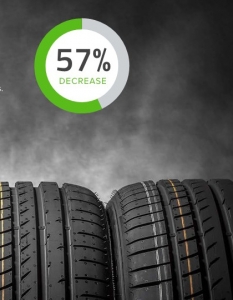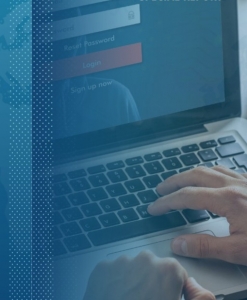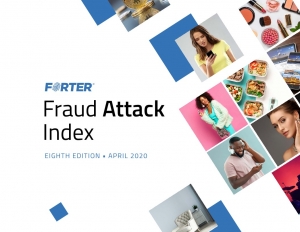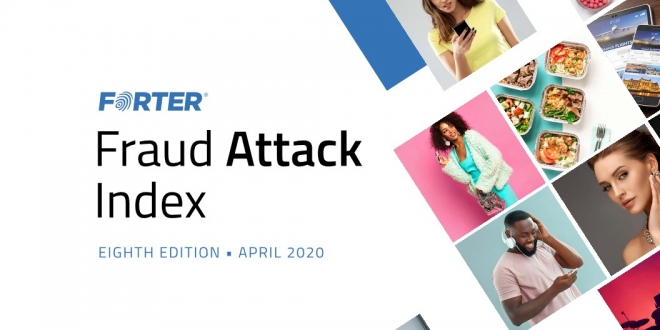
Forter today released the 8th edition of its Fraud Attack Index, a comprehensive trend report on sophisticated fraud attack vectors and the evolution of fraud. Forter also released a COVID-19 Special Report, focusing on Coronavirus related e-commerce consumer behavior and fraud trends during the Q1 2020.
The coronavirus pandemic has brought e-commerce and fast-changing shopper preferences into sharp focus for retailers and online sellers. With the pandemic has also come a big increase in e-commerce fraud and digital security challenges.
“Merchants are scrambling to cut costs, reduce the impact of fraud, scale efficiently, and deliver a consistent customer experience to meet rising consumer online buying behavior,” said Michael Reitblat, CEO and co-Founder of Forter. “The aftermath of the pandemic will accelerate digital transformation among merchants as consumer shopping habits adapt.”
Big picture fraud trends
Quick highlights from the Forter Fraud Attack Index comparing H2 2018 with H2 2019) show:
- the value of attacks increased 3X year-over-year
- hotels saw the greatest increase in attacks, jumping 109%
- money services and cryptocurrency attacks grew 90%
- loyalty program fraud increased by 115%.

The travel industry was the most impacted with substantial increases in fraud attacks including ground travel (+86%) and air travel (+72%) although tickets and events showed a small 7% decrease. Fraudsters exploited “friction-free” hotel check-in, airline loyalty points, and travel package sales in particular. Food and beverage also showed an increase of 32% and apparel and accessories fraud instances were up 9%.
“As commerce evolves, so too do fraudsters’ methods of attack and exploitation. A rising level of sophistication in attacks and fraud and abuse methods comes at a time when user experience is key to overall business success,” the Forter report said.
Fraud decreased in several business sectors
Several business sectors showed substantial drops in fraud attacks including auto parts (-57%), home and garden (-51%), marketplace (-33%) and jewelry (-25%). Smaller decreases were also noted in beauty (-15%), electronic goods (-5%), and digital products (-5%).

The decrease in auto parts fraud was due partly to the customized nature of orders and the difficulty of monetizing merchandise. The home and garden sector proved difficult to target as well because items are larger in size and not easy to monetize although their high relative price still makes them an attractive target.
The report said merchants are challenged by trying to manage risk and loss as well as providing customers with a positive and secure shopping experience. “To ensure brand survival in an increasingly competitive market, retailers must be able to deliver friction-free customer experiences while also protecting their business,” the report noted.
Product returns fraud grew 33% as online criminals trying to exploit merchants making product returns it easier. The report noted that one in for customers abandoned shopping carts because of poor product return policies and 38% of consumers indicated product return policies affect their likelihood to purchase. Items not received (INR) abuse also grew 8% as criminals tried to fraudulently receive product refunds as well as make a chargeback claim creating a double whammy for merchants.
New fraud techniques arise

Fraud attempts using social engineering grew as cybercriminals get more adept at targeting victims. One sophisticated group of Indian fraudsters telephones older victims, posing as Amazon, eBay or Apple support employees.
“By sending a link for the victim to click through, the fraudster gains remote access and controls the victim’s mobile device. They follow by asking for credit card and other personal details. The fact that these fraudsters target victims’ mobile devices is a rather sophisticated way for fraudsters to cover their tracks,” according to the report.
Fraudsters were also making purchases further in advance in order to avoid easier detection as well as utilizing mobile fraud, stealing credit card information, and exploiting loyalty programs to gather customer data. Shipping fraud also proved popular with cybercriminals.
Coupon abuse remained a big problem, growing 133% mostly due to over sharing of coupons and discount codes and the challenge of verifying and tracking promotional codes. Coupon fraud is estimated to cost anywhere between $300 million and $600 million in lost revenue annually.

Buy online pick up in-store (BOPIS) fraud jumped 62% as fraudsters purchased an item online and then used stolen identities to pick up the product to monetize or return for a false refund. Similarly, buy online return in-store (BORIS) grew 33% costing US merchants more than $24 billion annually. Account takeovers decreased 35% as did account collusion (-9%) although they still plagued retailers.
Instrument manipulation increased 57% showing more sophistication and ease by which fraudsters gain access to mobile devices and other new technologies. “By leveraging burner phones, virtual machines, bots, and remote desktop protocol (RDP), fraudsters mask their activities, cloaking themselves from detection by less sophisticated fraud prevention systems,” the report said. While identity fraud dropped 37%, it still remained a big problem for retailers.
COVID-19 fraud presents a new face in 2020

Quick highlights from Forter’s COVID-19 Special Report provide valuable insight into shifting consumer preferences and fraud challenges for retailers resulting from the coronavirus pandemic.
With many layoffs, travel bans, consumers staying at home, quarantines, or with their health impacted by coronavirus, consumer purchasing preferences, and habits have shifted dramatically and quickly.
“Non-essential” purchases decreased dramatically while essential goods have sold out causing disruption in supply chains, sourcing problems, and difficulty in delivering many products on-demand or in a timely manner.
Some industry segments saw surprising sales growth
Forter researchers highlighted several key data from the first quarter of 2020:

- apparel transactions grew 36%
- with more time at home, sales of beauty products increased by 107%
- food and beverage showed transaction growth of 134% while grocery and delivery showed an even bigger jump of 225%
- new accounts grew 15%-25% depending on the industry compared to 5%-7% in pre-coronavirus days.
New account openings provide an opportunity for fraudsters to take advantage of new account growth to exploit challenges in reporting and verification by merchants who are often working with reduced staffing levels.
Travel transactions dropped hugely

Transactions in the travel industry dropped steeply in Q1 2020 including air travel (-92%), ground transportation (-90%), and hotels (-89%) due to travel bans, border closures, stay-at-home and other coronavirus pandemic measures. The decline started in China, spreading across Asia and soon became a global impact.
“On March 11th, President Trump made a speech recognizing that Coronavirus is a global pandemic. Shortly thereafter, spikes in activity across marketplaces (March 12th and 13th) indicated that people began to rush out and stock up on supplies (face masks, hand sanitizer, rubber gloves, and toilet paper) as a result. While demand remains high, declines here are likely due to supply challenges,” Forter reports.
Digital goods also showed an increase with video games up 54% and digital coins up 49%, likely due to consumers staying home. Marketplaces saw a 53% increase in transaction volume as consumers scramble to buy.
Coronavirus related fraud jumps
Fraudsters are working hard to exploit companies with remote workers or phishing employees working from home in order to try and steal company information and credentials. With physical contact limited, support teams have provided a perfect opportunity for sophisticated fraudsters to prey on consumers.

The FBI and IRS both issued fraud alerts and fraudsters are taking advantage of increased government communication in order to target victims. Support service imposters have entered the marketplace and contactless deliveries are proving fertile ground for fraud and theft.
Many healthcare and essential products showed sharp increases in demand leading to delivery and supply chain problems. Orders for toilet paper jumped 2,500 times in one day. Hand sanitizer sales increased 15 times in one week while masks sold that more than 90 times the normal rate.
“Rules based systems by their nature look at the past and adapt to it,” said Reitblat. “New consumer behaviors, which we’re seeing across industries, as well as new fraud behaviors, are missed by these systems until they can adapt. Forter’s identity-based system authenticates the buyer, not just the behavior.”
The report concluded, saying, “Fraud attacks and abusive behaviors are growing more targeted and sophisticated. They require a more nuanced prevention system that is able to accurately distinguish legitimate customer behaviors (including coupon redemption or returns requests), from abuse and fraud. In partnership with a fraud prevention platform that leverages a robust global merchant network of data, merchants will have greater context into both fraudulent and legitimate customer behaviors, allowing more accurate fraud decisions to be made.”
The world has changed dramatically in just three months and some payments, e-commerce, supply chain and purchasing habit changes and impact will be felt by business and consumers for many months if not years.

The Fraud Attack Index compares fraud trends from H2 2018 to H2 2019 across the Forter network from more than $150 billion in online commerce transactions and more than 600 million consumers. The COVID-19 Special Report contains Q1 2020 data running through April 2nd. You can get copies of the full reports here.
Images courtesy of Forter








LET’S CONNECT